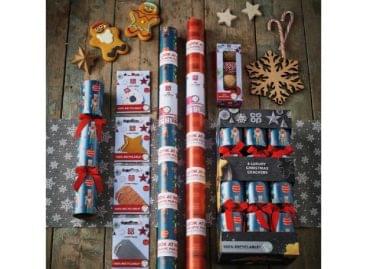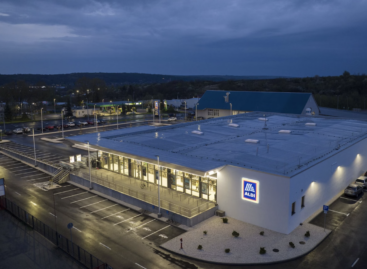Magazine: Emotionally the most effective OTC commercials in 2020 – according to Synetiq’s regular neuromarketing tests
In 2020 demand rose sharply for OTC products and at the same time the commercials of pharmaceutical companies switched to a different focus than they had had before, expressing support for healthcare workers and trying to calm down panicking consumers. Face masks, saying thank you and messages encouraging each other were heavily featured in these short films.

Guest writer:
Petra Várhelyi
marketing manager
Synetiq
In 2020 Synetiq analysed nearly 200 commercials from the OTC category, using its neuromarketing methodology. Synetiq puts greater emphasis on ‘non-conscious’ results.
2020 – drama or not caring?
When life changes as dramatically as during the pandemic, the question emerges: what generates more emotions in commercial viewers, sales-centred communication that doesn’t care about the pandemic or moving visuals that focus on COVID-19? Synetiq has found that viewers got used to pandemic-themed communication rather fast. This is the reason why it would be difficult to tell what worked and how much pandemic-specific communication supported brands. It is very important to mention that how well-known a brand is and the actual product can have a very big impact on viewers’ conscious evaluation of commercials in the OTC category. Very often a commercial generates emotions in viewers, but in the questionnaire they give a negative rating because they simply detest the given category. Still, there are brands that can break down such walls.
The Top 10 emotionally most effective commercials were the following:
Sanofi – Magne B6 – 30s – I can cope!
Novartis Hungária – Calcium Sandoz – 30s – Dropping
Gyógynövénykutató intézet – Irix – 30s – Woman having a hard time with her parasol
Egis – Betadine – 25s – Children’s stories
Béres – Béres Csepp Extra – 25s – Home office
Viatris – Magnosolv – 30s – Stress
Bayer – Aspirin Plus C – 25s – Kicked symptoms
STADA – Cetebe – 30s – Vitamin C
Teva – Neogranormon – 35s – Kata’s skin
Sanofi – Algopyrin – 30s – Professional
1. Sanofi – Magne B6 – 30s – I can cope!
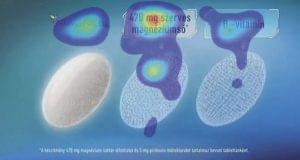

The main message of the campaign for Sanofi Magne B6 was ‘I can cope!’ Commercials introduced various stressful moments. Viewers could really identify with these visuals and their attention level remained high. As for the characters and the ‘I can cope!’ message, viewers were on the same wavelength in all cases. They found the woman running up the hill to be the most attractive. This was the scene that strengthened the stable engagement even further, constituting the perfect choice before the animation and the arrival of the product: viewers became the most interested at this point.
2. Novartis Hungária – Calcium Sandoz – 30s – Dropping
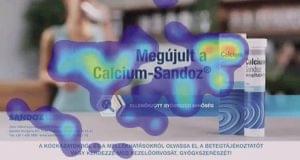

A cute commercial about how many ways an effervescent tablet can be dropped in a glass of water. The commercial is a perfect example of how much well-chosen music can back a story: there was a stable engagement which started to drop a little once music was replaced with narration. Already the first scene brings the ‘wow’ moment and in general it can be said that viewers found this commercial especially relevant, activating and characteristic of the brand.
3. Gyógynövénykutató intézet – Irix – 30s – Woman having a hard time with her parasol
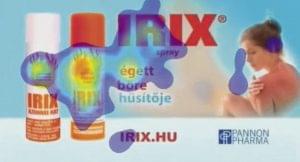

Yes, funny commercials can be made in the OTC category as well! In Irix’s commercial viewers felt frustration when the woman was struggling and they reacted to the funny scenes and laughing characters with positive emotions. The emotional peak was when the product appeared. As for the packshot, placing the product on the left not only put the brand in the centre of attention, it was also in harmony with the narration and was attractive to viewers. Although viewers said the commercial was only an average match with the brand, in general they found it relevant and activating.
A guide to the emotion curves
Engagement (yellow): it shows the level of attention and involvement
Approach (white): it indicates the emotional impact (the viewer likes it/doesn’t like it)
Excitement (orange): the level of excitement must be interpreted in combination with the two other curves. //
Tips from Synetiq
Why did these 3 commercials work so well?
1. Relevant characters: in most cases viewers identify with characters similar to them. In several of the commercials in the Top 10 the main character is someone they like – it doesn’t even matter whether it is an ordinary person or a brand ambassador.
2. Relevant scenes: presenting scenes that the target group deems to be familiar can contribute very much to viewers relating to the commercial and its message. What is more, familiar situations can make viewers pay closer attention.
3. A packshot that is built up well: when the packshot arrives is the decisive moment in a commercial. It is very important to have a story that prepares the scene for the product’s appearance.
More information: www.synetiq.net //
About Synetiq
Synetiq is a neuromarketing scale-up that was established in 2014 and specialises in sensory measurements. Neuromarketing analyses people’s emotional reactions to commercials, with the help of physical reactions. On a monthly basis Synetiq provides partners with technology-based data on the emotional reactions of 18-59 year old, ABC-status television viewers. //
The above article has also been published in Issue 2021/12-01 of Trade magazin.
Related news
What makes a good advertisement today?
🎧 Hallgasd a cikket: Lejátszás Szünet Folytatás Leállítás Nyelv: Auto…
Read more >Vitamins are no longer a luxury
🎧 Hallgasd a cikket: Lejátszás Szünet Folytatás Leállítás Nyelv: Auto…
Read more >Pharmacies and beyond
🎧 Hallgasd a cikket: Lejátszás Szünet Folytatás Leállítás Nyelv: Auto…
Read more >Related news
Even though the price of cocoa has halved, chocolate will not become cheaper
🎧 Hallgasd a cikket: Lejátszás Szünet Folytatás Leállítás Nyelv: Auto…
Read more >Temu is crushing domestic webshops – Christmas won’t change either
🎧 Hallgasd a cikket: Lejátszás Szünet Folytatás Leállítás Nyelv: Auto…
Read more >The Hungarian Food Bank is putting together 44,000 food packages from the proceeds of ALDI’s first Advent market
🎧 Hallgasd a cikket: Lejátszás Szünet Folytatás Leállítás Nyelv: Auto…
Read more >




